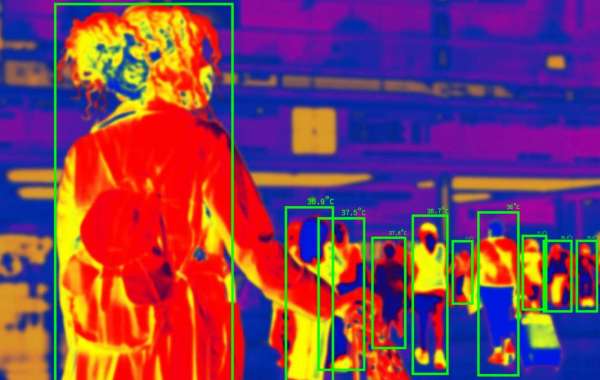Hyperspectral imaging is a powerful imaging technique that is used to capture high-resolution images with detailed spectral information. This technique has been widely used in various fields such as agriculture, environmental monitoring, and medical imaging. In this blog, we will discuss the basics of hyperspectral imaging, its applications, and its advantages over conventional imaging techniques.
Hyperspectral imaging is a technique that captures images at multiple wavelengths, creating a three-dimensional data cube consisting of two spatial dimensions and one spectral dimension. Each pixel in the image cube contains spectral information, which can be used to identify the materials present in the scene. The spectral information is obtained by dispersing the light into its component wavelengths using a prism or a diffraction grating. The dispersed light is then captured by a sensor such as a charge-coupled device (CCD) or a complementary metal-oxide-semiconductor (CMOS) sensor.
Hyperspectral Imaging Market was estimated to be at $791.2 million in 2021, which is expected to grow with a CAGR of 13.17% and reach $1,640.3 million by 2027.
One of the main applications of hyperspectral imaging is in remote sensing, where it is used to monitor the environment and natural resources. Hyperspectral imaging can be used to detect and monitor vegetation, soil, water quality, and atmospheric conditions. For example, hyperspectral imaging can be used to detect and monitor harmful algal blooms in lakes and oceans, which can affect the health of marine organisms and humans.
Another application of hyperspectral imaging is in medical imaging, where it is used to detect and diagnose diseases such as cancer. Hyperspectral imaging can detect subtle differences in tissue composition, which can help in identifying abnormal tissue growth. For example, hyperspectral imaging can be used to detect skin cancer by analyzing the spectral properties of the skin lesions.
Hyperspectral imaging is also used in agriculture, where it can be used to monitor crop health and detect diseases. Hyperspectral imaging can detect the spectral signatures of different crops and identify their health status. This information can be used to optimize crop yields and reduce the use of pesticides and fertilizers. For example, hyperspectral imaging can be used to detect fungal infections in crops, which can cause significant economic losses.
One of the main advantages of hyperspectral imaging over conventional imaging techniques is its ability to capture spectral information at a high spatial resolution. This allows for the detection and identification of materials with high accuracy. Hyperspectral imaging can also be used to map the spatial distribution of materials, which can provide valuable information about their properties and characteristics.
Another advantage of hyperspectral imaging is its ability to detect materials that are difficult to detect using conventional imaging techniques. For example, hyperspectral imaging can detect and identify trace amounts of minerals and chemical compounds in soil and water samples.
Hyperspectral imaging is also a non-destructive imaging technique, which means that it can be used to analyze samples without damaging them. This is particularly useful in applications such as medical imaging, where the analysis of tissue samples is critical.
In conclusion, hyperspectral imaging is a powerful imaging technique that has a wide range of applications in various fields such as remote sensing, medical imaging, and agriculture. The ability to capture spectral information at a high spatial resolution and the ability to detect materials that are difficult to detect using conventional imaging techniques make hyperspectral imaging a valuable tool for researchers and practitioners alike. As the technology continues to advance, hyperspectral imaging is expected to become even more versatile and useful in a wide range of applications.
The Hyperspectral Imaging market is growing rapidly due to the increasing demand for advanced imaging techniques in various industries such as agriculture, environmental monitoring, and medical imaging. The market is characterized by the development of innovative imaging technologies that provide high-resolution images with detailed spectral information. The market is also witnessing the development of new applications, such as hyperspectral imaging for food quality control and hyperspectral imaging for precision agriculture. The increasing adoption of hyperspectral imaging in research and development activities is also driving the growth of the market. Moreover, the increasing investment in research and development activities in the field of hyperspectral imaging is expected to drive the growth of the market in the coming years. The market is expected to continue to grow as new applications are developed and the technology becomes more affordable and accessible.
Factors Impacting the Growth of the Market
The global hyperspectral imaging market is anticipated to be influenced by various factors during the forecast period 2022-2027. The widespread applications of hyperspectral imaging technology, increasing demand, and investments from military and defense sectors, increasing investments by the government for research and development, increasing prevalence of various chronic disorders and growing geriatric population, growing awareness regarding early diagnosis of diseases, and growing food safety concerns are some of the key factors driving the growth of the market. However, the high cost of hyperspectral imaging devices, the lack of infrastructure and skilled professionals to support hyperspectral imaging, and the high volume of data produced by hyperspectral devices are some of the factors restraining the growth of the market.
COVID-19 Impact and Post-COVID-19 Scenario
The COVID-19 pandemic had a debilitating impact on the global ecosystem. The pandemic led to a shutdown of production facilities, which do not come under essential goods, which led to a negative impact on several markets. Hyperspectral imaging was negatively impacted since the pandemic led to a decline in the number of non-essential activities performed in all the facilities and research centers, which subsequently impacted the adoption of imaging devices, including those for HSI. Major players in the global hyperspectral imaging market faced disruptions in supply chains, and the demand for products was also reduced substantially. However, this impact was offset by the continued RD in the field of HSI along with newer research on how HSI could help detect COVID-19 more quickly and accurately.
Get Free Sample Report - Click Here
Some of the prominent names established in this market are:
Company Type 1: Established Companies
• BaySpec, Inc.
• Corning Incorporated
• CytoViva, Inc.
• Headwall Photonics, Inc.
• HORIBA Ltd.
• HyperMed Imaging, Inc.
• IMEC International
• Inno-spec GmbH
• Konica Minolta, Inc.
• Norsk Elektro Optikk A/S
• Photon Etc.
• Resonon, Inc.
• Swift Medical Inc.
• Teledyne FLIR LLC
Company Type 2: Emerging Companies
• Clyde Hyperspectral Imaging and Technology Ltd.
• Cubert GmbH
• Diaspective Vision GmbH
• Emberion
• GAMAYA
• HAIP Solutions GmbH
Key Questions Answered by This Report:
- What are the major market drivers, challenges, and opportunities in the global hyperspectral imaging market?
- What are the underlying structures resulting in the emerging trends within the global hyperspectral imaging market?
- How is each segment of the global hyperspectral imaging market expected to grow during the forecast period, and what is the anticipated revenue generated by each of the segments by the end of 2027?
- What are the significant developmental strategies implemented by the major players in order to sustain in the competitive market?
- What are the key regulatory bodies controlling the entry of hyperspectral imaging products into the market?
- Who are the leading players with significant offerings to the global hyperspectral imaging market?
- What is the current market dominance for each of these leading players?
- What is the expected compound annual growth rate (CAGR) expected to be witnessed by the leading players in the market during the forecast period 2022-2027?
- What are the major technological as well as regional adoption trends pertaining to the global hyperspectral imaging market?
- What are the major technologies employed in the global hyperspectral imaging market?
- Which is the most dominating technology?
- Who are the key manufacturers in the global hyperspectral imaging market, and what are their contributions?
- What is the growth potential of the different applications for hyperspectral imaging in the market?
Additionally, BIS Research also offers a dedicated and unique platform to find and access deeptech insights and updates on emerging technologies across industry verticals. Insight Monk, an AI powered deeptech search engine, is a subscription based platform that offers a library of latest market insights and updates based on emerging tech. Learn more about InsightMonk here.









